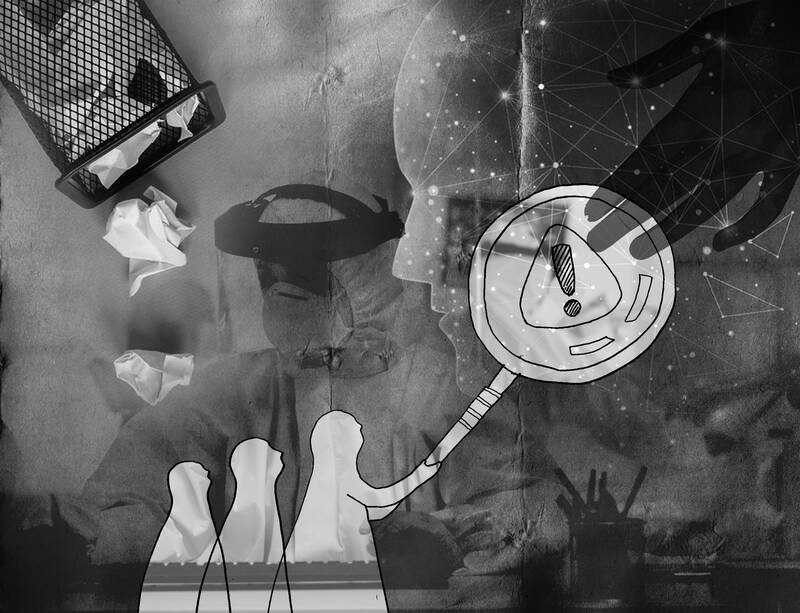Faking it until you make it may be a common practice in some careers. But it is clearly unethical for scientists and medical researchers. All the same thousands of fake papers are churned out by so-called paper mills and published every year, many of them in peer-reviewed journals.
The issue made headlines recently when Wiley, a respected publishing house, announced it would be dropping 19 of its journals associated with a publisher they had acquired, called Hindawi, in part because they were infested with fake papers. But the problem was known before: The fraud sleuthing blog For Better Science called attention to the “fraud-positive” attitude at Wiley back in 2022. (And I covered the problem of fake research on my Follow the Science podcast in 2021.)
These are not just papers with fudged data — in many cases, all the data and the text have been invented from whole cloth, generated with artificial intelligence or plagiarized. They are fake all the way through. The creators of these fake papers have been dubbed paper mills, and they operate by reaching out to scientists and offering to write papers with the scientists’ names at the top — for a price.

Illustration: Tania Chou
Paper mills have proliferated because of a pathology that has afflicted many areas of science. Scientists are rewarded for the quantity of their research more than its quality. And peer review is non-functional at many journals.
In that disturbed ecosystem, parasitic companies flourish by helping scientists cheat to bolster their resumes, snag competitive academic jobs and impress funding agencies. Ultimately that causes some precious resources get routed to cheaters and away from more worthy scientists.
Worse still, some of the fake results can seep into other articles, contaminating the state of medical knowledge, said David Sanders, a biologist at Purdue University who has been tracking scientific misconduct and the paper mill problem. For enough money, the paper mills can make a fake paper look more influential by creating other fake papers that cite it, he said. The paper mill studies can even get cited in seemingly legitimate review papers if the review authors — who are also trying for volume — do not pay sufficient attention to what they are reviewing.
Some paper mill papers show obvious flaws, including patently plagiarized graphs, images and text. Some are translated from English to another language and back — and that can lead to bizarre wordings, such as “lactose intolerance” becoming “lactose bigotry,” Sanders said.
Still others show absurdities like an experiment in which half a sample of ovarian cancer patients was male.
Now with the help of ChatGPT, paper mills can create much more coherent, plausible papers cheaply and effortlessly. Scientific fields beset by fake papers might do better to address the roots of the problem rather than trying to chase them down.
Ivan Oransky, cofounder of the blog Retraction Watch, has been tracking problematic research for years. He said that paper mill output has been estimated to make up about 2 percent of papers. That might not sound big, but somewhere between 2 million and 6 million scientific papers are published every year, so 2 percent adds up to a lot.
Some journals are more than 50 percent generated by paper mills, Sanders said. The way he described it, the paper mills find a susceptible journal and then “they completely parasitize it.”
He said he blames not just shoddy peer reviews, but a perverse system of evaluating scientific merit.
“Hiring committees or grant committees don’t have the wherewithal to make an actual evaluation,” Sanders said.
So scientists get rewarded based on the number of publications they author and the number of other publications that cite these.
Even many legitimate journal articles do not advance the state of knowledge, he said, at least in the biomedical arena. Researchers might have gathered a bit of additional data for an ongoing project, which should be deposited into a data bank rather than turned into an unnecessary paper.
“I would say the majority of articles that are published now make no contribution beyond the data they present,” he said. “They are not worth reading.”
The whole incentive system is warped, he said, and people are so dependent on grants for their survival that they would “do whatever is necessary.”
The fake papers often use a pre-existing template, he said, filling in words and data like a game of Mad Libs. Paper mill creations are more pervasive in fields where papers tend to be formulaic, such as nanotechnology, computer science and an area of cancer research called microRNAs.
However, some fault also lies with other scientists who cite these fake papers in review articles — which are proliferating at a rate far beyond what is beneficial to science or society. Even when initial papers get retracted, their impact remains in the form of citations and mentions in review papers.
Eventually, the bad papers can contaminate standards of medical care, Sanders said. Some people are developing cancer diagnostics based on fake papers. He has seen a paper mill product referenced in a thesis defense. He’s even heard from cancer patients citing a fake paper to inquire about alternative therapies.
Funding agents could help by refusing to fund work that goes into badly reviewed journals laden with fake findings. They could keep a list of approved journals that do rigorous peer review and only fund work aimed at getting published in those. Sanders said more funding should also go into fraud detection in science.
People do not need millions of scientific papers, most of them doing little to advance our knowledge. We need more scientists to put their energy into quality control or slow, careful research. Science is a competitive field and those who make it should not t be fakers.
F.D. Flam is a Bloomberg Opinion columnist covering science. She is host of the Follow the Science podcast. This column does not necessarily reflect the opinion of the editorial board or Bloomberg LP and its owners.

Taiwan has lost Trump. Or so a former State Department official and lobbyist would have us believe. Writing for online outlet Domino Theory in an article titled “How Taiwan lost Trump,” Christian Whiton provides a litany of reasons that the William Lai (賴清德) and Donald Trump administrations have supposedly fallen out — and it’s all Lai’s fault. Although many of Whiton’s claims are misleading or ill-informed, the article is helpfully, if unintentionally, revealing of a key aspect of the MAGA worldview. Whiton complains of the ruling Democratic Progressive Party’s “inability to understand and relate to the New Right in America.” Many
US lobbyist Christian Whiton has published an update to his article, “How Taiwan Lost Trump,” discussed on the editorial page on Sunday. His new article, titled “What Taiwan Should Do” refers to the three articles published in the Taipei Times, saying that none had offered a solution to the problems he identified. That is fair. The articles pushed back on points Whiton made that were felt partisan, misdirected or uninformed; in this response, he offers solutions of his own. While many are on point and he would find no disagreement here, the nuances of the political and historical complexities in
Taiwan is to hold a referendum on Saturday next week to decide whether the Ma-anshan Nuclear Power Plant, which was shut down in May after 40 years of service, should restart operations for as long as another 20 years. The referendum was proposed by the opposition Taiwan People’s Party (TPP) and passed in the legislature with support from the opposition Chinese Nationalist Party (KMT). Its question reads: “Do you agree that the Ma-anshan Nuclear Power Plant should continue operations upon approval by the competent authority and confirmation that there are no safety concerns?” Supporters of the proposal argue that nuclear power
The Centers for Disease Control and Prevention (CDC) earlier this month raised its travel alert for China’s Guangdong Province to Level 2 “Alert,” advising travelers to take enhanced precautions amid a chikungunya outbreak in the region. More than 8,000 cases have been reported in the province since June. Chikungunya is caused by the chikungunya virus and transmitted to humans through bites from infected mosquitoes, most commonly Aedes aegypti and Aedes albopictus. These species thrive in warm, humid climates and are also major vectors for dengue, Zika and yellow fever. The disease is characterized by high fever and severe, often incapacitating joint pain.